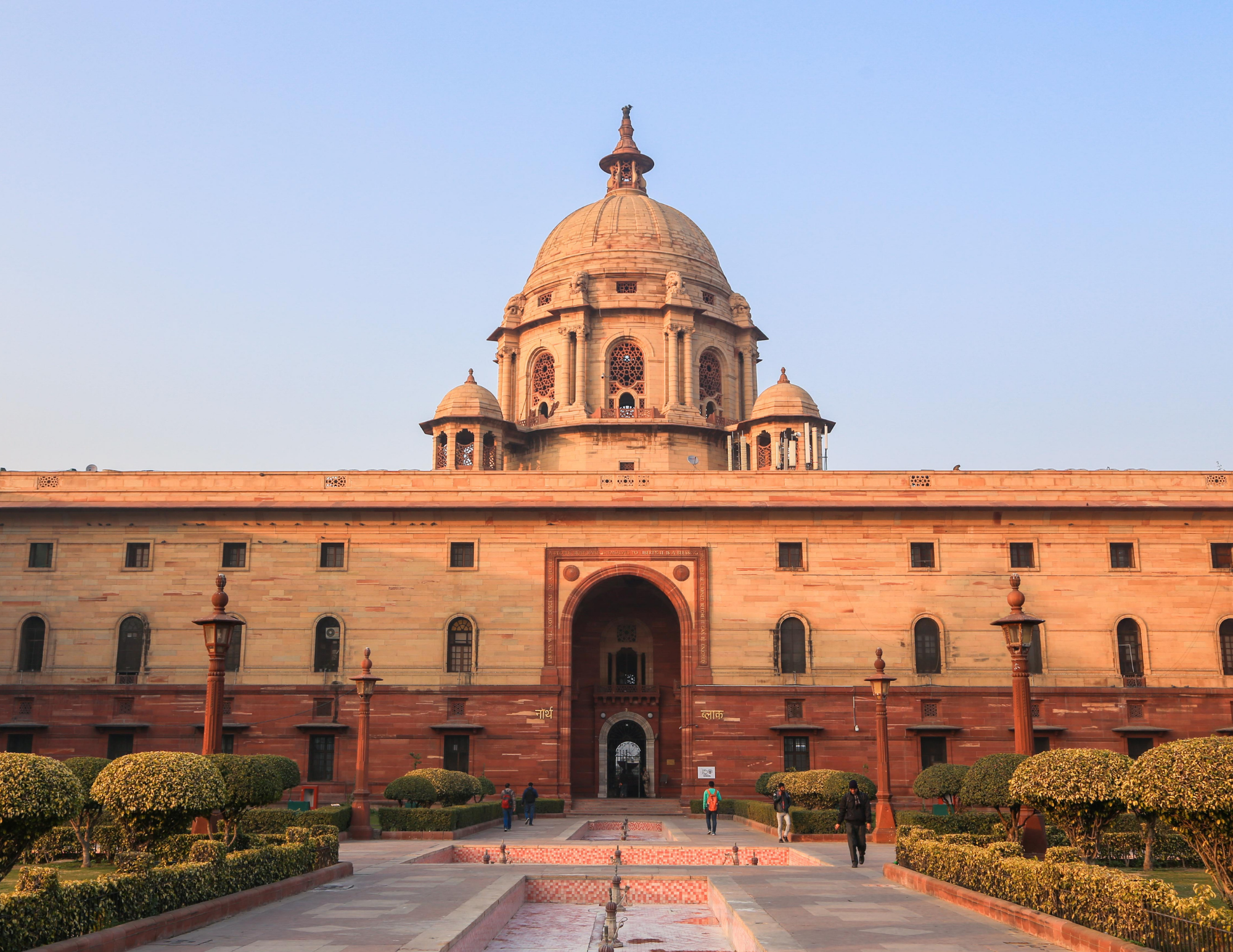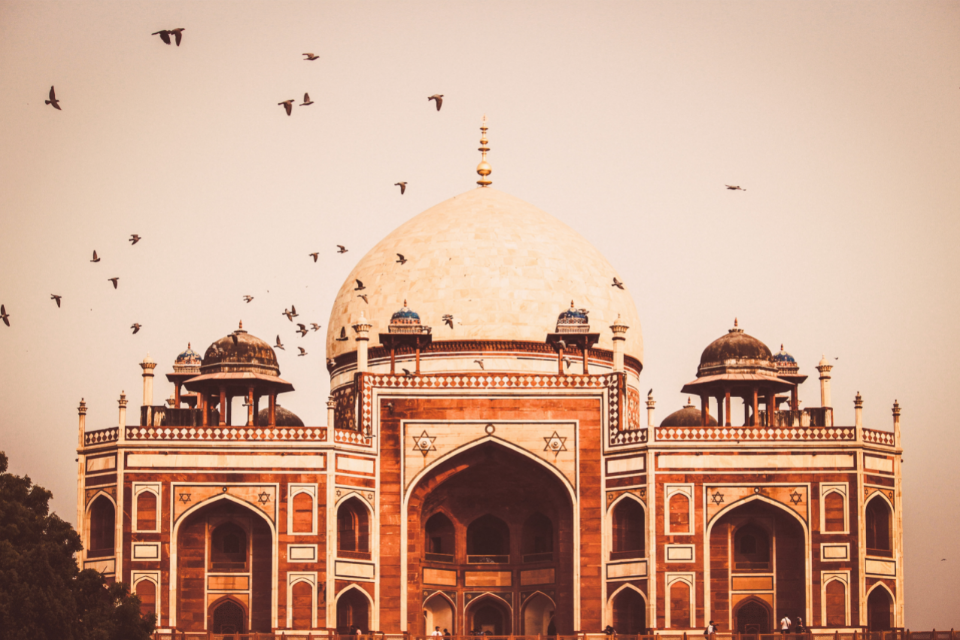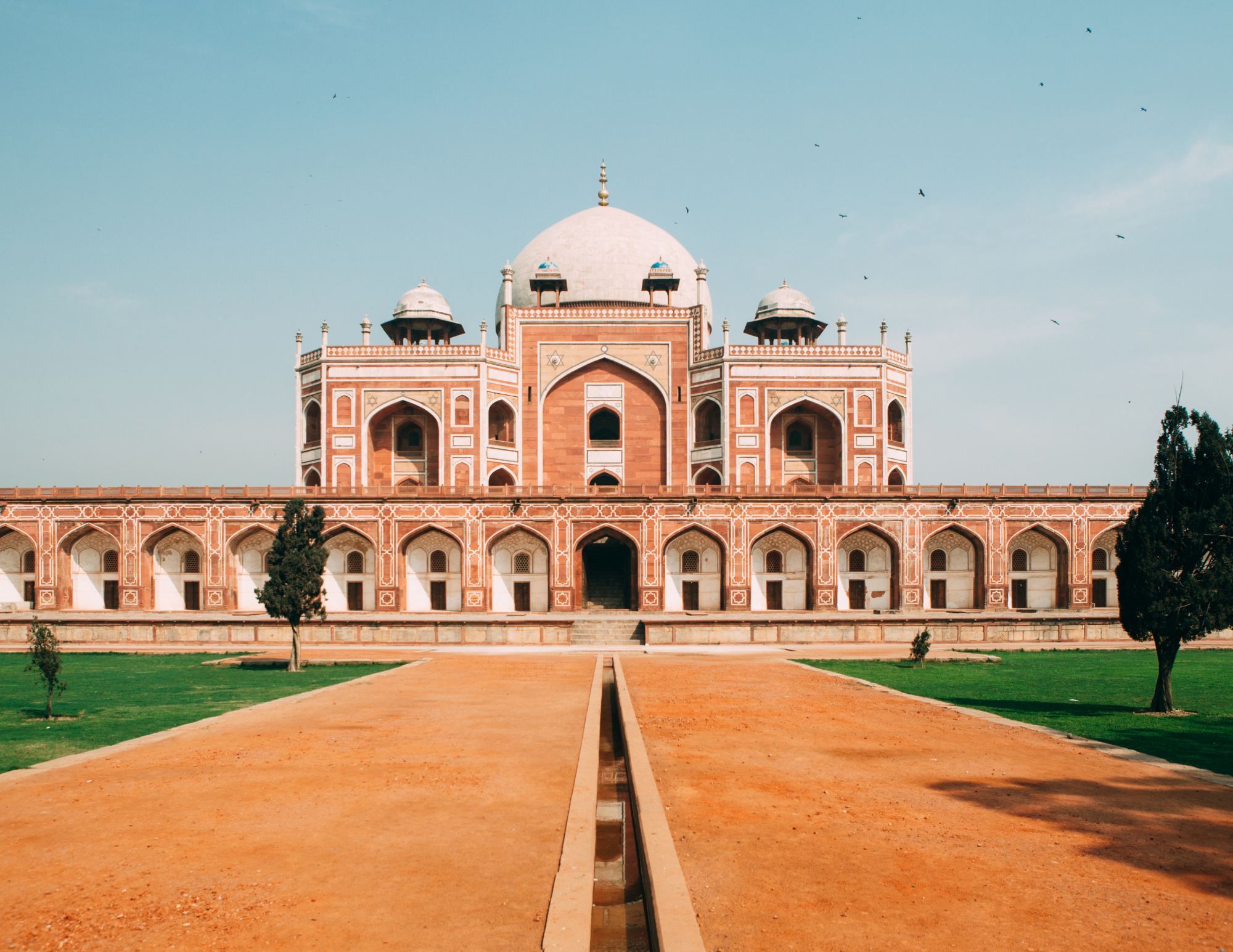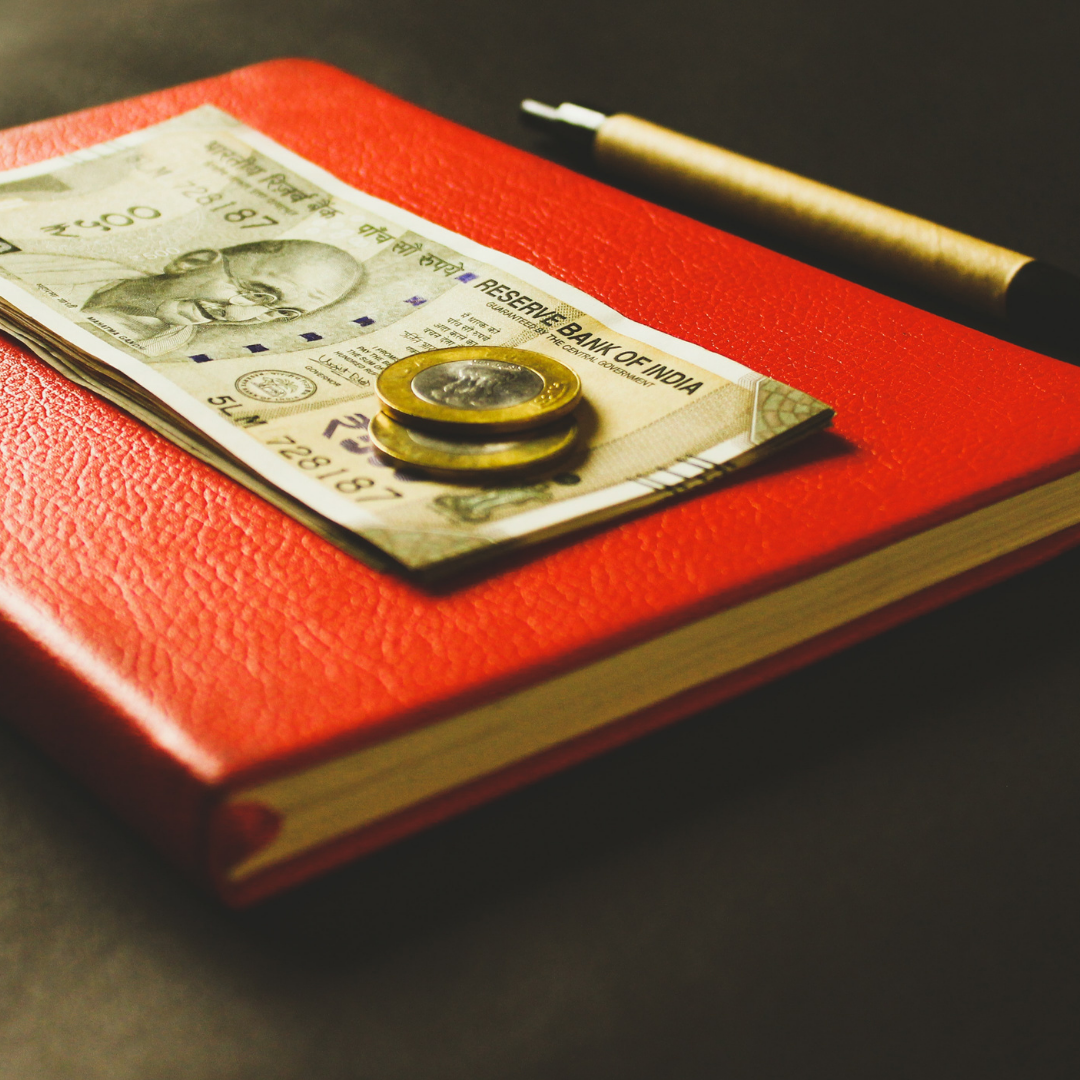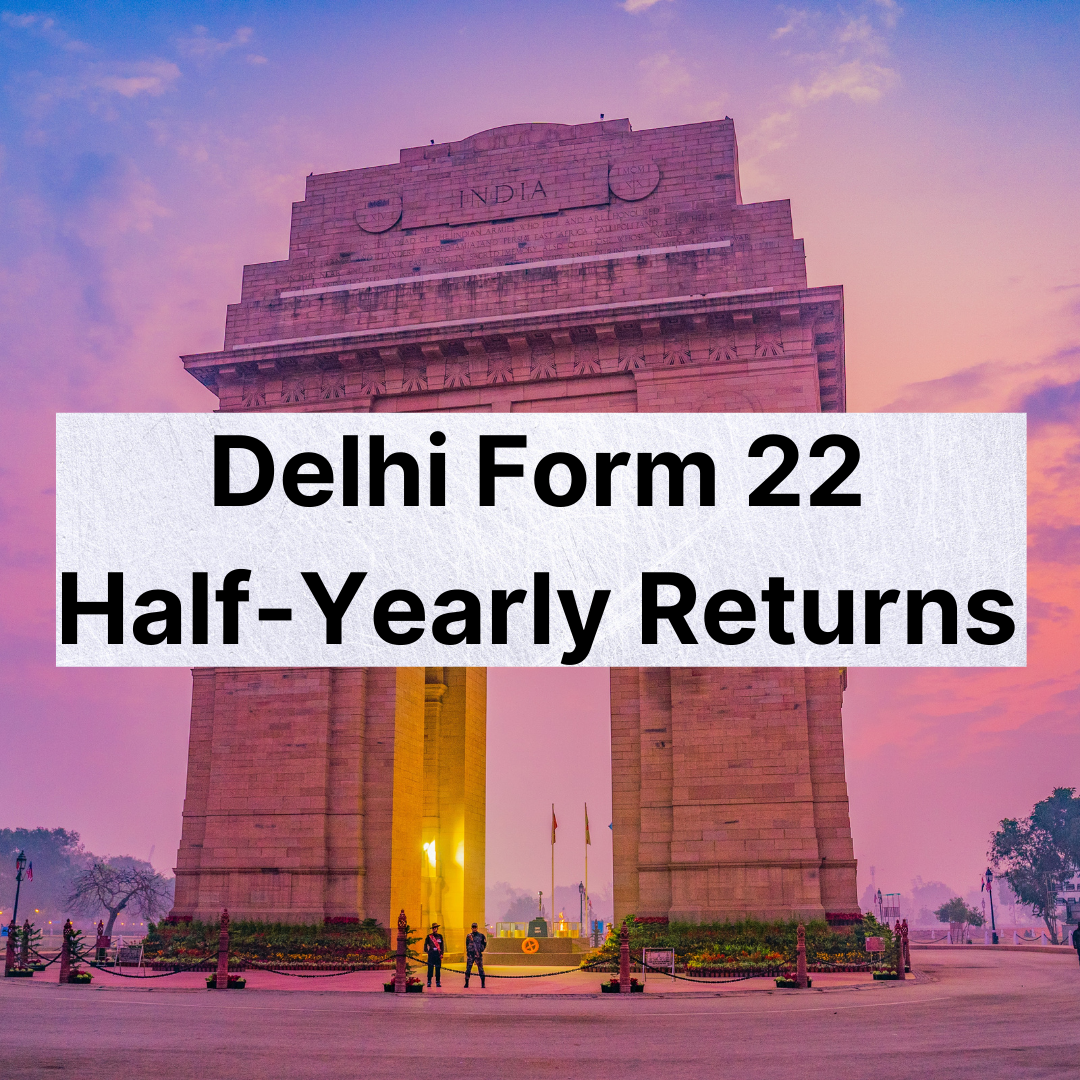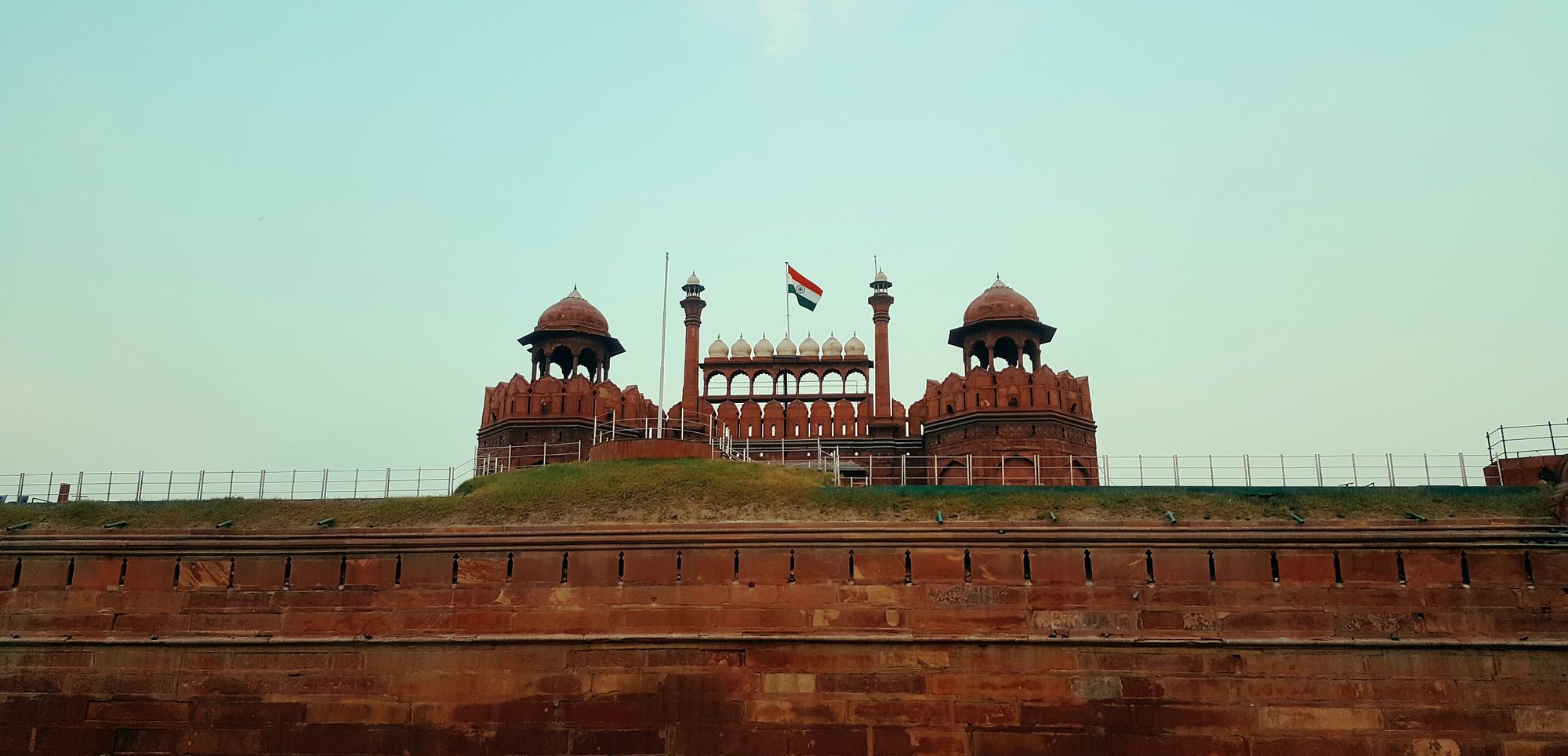What is the one thing that you look forward to the most in the midst of hectic working days? Which are the dates that you are most likely to mark in your calendars and plan for? For most of you, the answer to these questions will be holidays. If your answer was the same, then this article is for you.
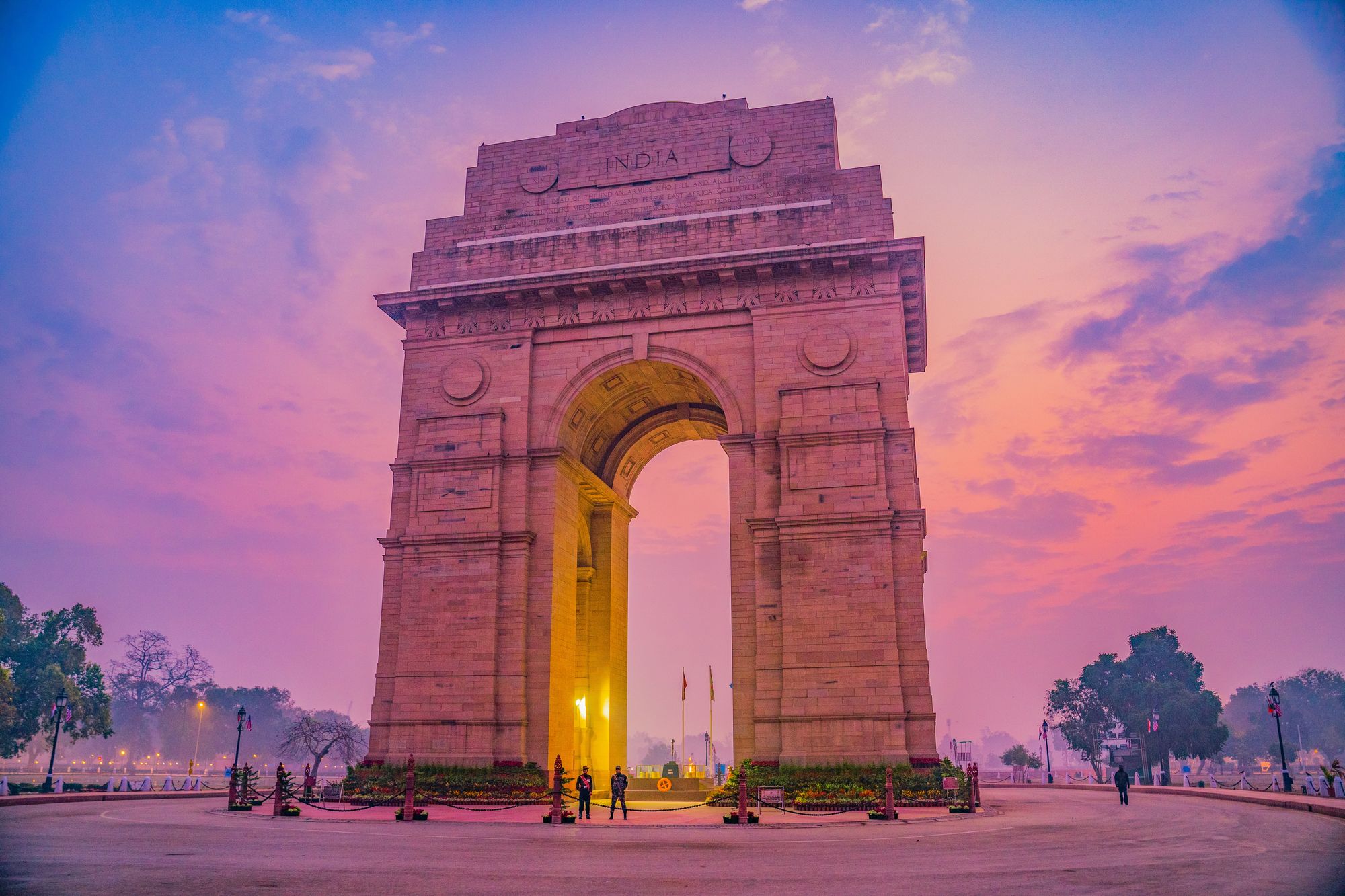
Holidays are some of the most awaited days to take a trip on, go out on, or just relax and rest on. When your everyday life is filled with commitments, deadlines, and a shortage of time, holidays become the days of recreation and rejuvenation that will help you manage your workplace stress and not reach the stage of burnout.
Holidays also help in ensuring that you remain motivated towards your work and that your efficiency and productivity do not get hampered. This, in turn, is beneficial for your establishment or employer, who will see it through increased productivity, increase in net profit ratio, increase in gross profit, healthier financial statement, and business metrics.
Thus, in this article, I will be discussing the Delhi holidays 2022 so that you can go ahead and plan for them in advance. The topics that will be covered are:
About Delhi
Delhi is the capital of India and consists of two components: the Old Delhi, which is in the north and forms the historic part of the city; the second component is the New Delhi, which is in the south. In addition to the Old Delhi and New Delhi, the capital of India, which is the nation’s largest urban agglomerations, embraces the surrounding metropolitan regions as well as the adjacent rural areas.
Delhi is not only a symbol of the country’s rich past and thriving present, where the ancient and the modern blend seamlessly together, but it is also an important commercial, transport, and cultural hub and political center of India.
In fact, while the city has been the seat of many powerful empires in the past, which can be traced through its many carefully-preserved monuments, ancient forts and tombs, narrow lanes, old Havelis, and colorful bazaars, this city also boasts of the best features of a modern city, like, metro system, national and international airports, fabulous eating places, bustling markets, residential complexes, sporting facilities, entertainment centers and malls, and brand new hospitals.
Delhi is thus home to millions of dreams, whilst the city and a union territory of India take on unprecedented responsibilities of realizing dreams, bringing people closer together, and inspiring their thoughts. Considering its rich cultural heritage, as well as the endless growth opportunities, holidays are some of the most treasured days by those living and working here. The calendar of Delhi Holidays 2022 will be your perfect guide for the same.
List of Holidays in Delhi in 2022
The list of holidays in Delhi for the year 2022 is as follows:
Republic Day (26th January 2022)
Republic Day is a public holiday and one of the first public holidays to be observed by those in Delhi. On this day, the country marks and celebrates the date on which the Constitution of India came into effect on 26th January 1950.
The Constitution of India replaced the Government of India Act 1935 as the governing document of India and turned India into a newly formed republic. This day also marked the transition of India from an autonomous Commonwealth realm with the British Monarch as the nominal head of the Indian Dominion to a fully sovereign republic in the Commonwealth of Nations. It was the President of India who now became the nominal head of the Indian Union.
The main celebration of the Republic Day is held in the national capital- New Delhi, at Rajpath before the President of India each year. One of the main highlights of this celebration is the ceremonial parade that takes place and is performed as a tribute to India, its rich cultural heritage and its unity in diversity.
This parade is organized by the Ministry of Defense and starts from the gates of the Rashtrapati Bhavan, Raisina Hill on Rajpath, past the India Gate, and lasts for three days. The parade showcases India’s Defense Capability and Cultural and Social Heritage.
In addition to nine to twelve different regiments of the Indian Army, along with the Navy and Air Force with their bands, march past in all their finery and official decorations, the twelve contingents of various paramilitary forces of India and police forces also take part in this parade. It is the President of India, who is the Commander-in-Chief of the Indian Armed Forces, and who takes the salute.
On the eve of the Republic Day each year, the President of India distributes Padma Awards to the civilians of India. Padma Awards are the second highest civilian awards after the Bharat Ratna and are given in three categories (in decreasing order of importance):
- Padma Vibhushan for exceptional and distinguished service.
- Padma Bhushan for distinguished service of a high order.
- Padma Shri for distinguished service.
Finally, on the evening of 29th January, after officially denoting the end of Republic Day Festivities, the Beating Retreat ceremony is held. It is performed by the bands of the three wings of the military, the Indian Army, the Indian Navy, and the Indian Air Force.
The President of India is the Chief Guest of the function, and thus, once he arrives, the PBG (President’s Bodyguard) Commander asks the unit to give the National Salute, which is followed by the playing of the Indian National Anthem, Jana Gana Mana, by the Army. Some other popular tunes that tend to be played by either of the three bands are Abide With Me and Mahatma Gandhi’s favorite hymn, Saare Jahan Se Achcha, at the end.
Maha Shivratri (1st March, 2022)
Maha Shivratri is a Hindu festival that is celebrated annually in honor of Lord Shiva. While in each month of the lunisolar Hindu calendar, there is ‘Shivratri’ - the “night of Shiva” on the day before the new moon, Maha Shivratri - “the Great Night of Shiva” is once a year, in the late winter, before the arrival of Summer.
Maha Shivratri is a solemn festival that marks a remembrance of overcoming darkness and ignorance in life and the world. This festival is observed by remembering Shiva and chanting prayers, fasting, and meditating on ethics and virtues such as honesty, non-injury to others, forgiveness, charity, and the discovery of Shiva.
On this day, ardent devotees stay awake the whole night - “jagraan,” whereas others visit a Shiva Temple or go on pilgrimage to jyotirlingams. Some of the devotees also perform all-day fasting with Vedic or tantric worship of Shiva on this day, while some also perform meditative yoga. Also, offerings of fruits, leaves, sweets, and milk are made to Lord Shiva on this day.
In the Shiva temples, “Om Namah Shivaya,” which is the sacred Panchakshari mantra of Shiva, is chanted throughout the day. Additionally, the devotees also praise Lord Shiva through the recitation of Shiv Chalisa.
This regional holiday is also shared with the state of Haryana in their 2022 calendar of holidays.
Holi (18th March 2022)
Holi is one of the most colorful and favorite festivals amongst Indians and even non-Indians. It is a Hindu festival that has been celebrated since ancient times as a way of welcoming spring. In fact, the festival is also seen as a new beginning where people can release their inhibitions and start fresh. Holi is thus also known as the Festival of Spring, Festival of Colors, and the Festival of Love.
Holi also signifies the triumph of good over evil by celebrating the victory of Lord Vishnu as Narasimha Narayana over Hiranyakashipu. In addition to celebrating the arrival of spring and the end of the winter, Holi is also a celebration of the blossoming of love.
For many, it is a holiday and a festive day to meet others, play and laugh with them, forget and forgive, and even repair broken relationships. It is also the invocation for a good spring harvest season.
The festival of Holi lasts for a night and a day, with the first evening known as the Holika Dahan or Chhoti Holi, and the following day is known as the Holi or Rangwali Holi or Dol Purnima or Dhuleti or Dhulandi or Ukuli or Manjal Kuli or Yaosang or Shigmo or Phagwah or Tajiri.
In the evening of Holika Dahan, people gather and perform religious rituals in front of the bonfire and pray for their interval evil to be destroyed the way Holika, the sister of the demon king Hiranyakashipu was killed in the fire.
The next morning, on the day of the Rangwali Holi, people smear each other with colors and drench each other. Water-filled balloons, water guns, etc., are used to play and color each other. On this day, anyone and everyone is a fair game, stranger or friend, rich or poor, man or woman, children and adults. This celebration can happen anywhere, from open streets, outside buildings or temples, and parks. The groups usually carry drums and other musical instruments with them.
On this day, people go from place to place, playing, singing, and dancing. People also visit family and friends. In fact, oftentimes, even foes come together to leave aside their differences and start anew by smearing color on each other. On this day, everyone laughs and gossips together and shares Holi delicacies, food and drinks.
Mahavir Jayanti (14th April, 2022)
Mahavir Janma Kalyanak or Mahavir Jayanti is one of the most important religious festivals in Jainism that celebrates the birth of Mahavir - the twenty-fourth and last Tirthankara of present Avasarpini.
Jainism is practiced by over 3.5 million people. These people follow a path of non-violence toward all living beings. In fact, some even wear face masks to prevent the chance of inadvertently killing an insect while breathing in. This festival is celebrated with splendor across India and the world and is marked with prayers and fasting. It is celebrated by the Jain community to observe peace and harmony and to spread the teachings of the Mahavira.
This regional holiday is given by the state government of West Bengal in their 2022 holiday calendar as well.
Good Friday (15th April 2022)
Good Friday is the Friday before Easter. It is the Christian holy day that commemorates the crucifixion of Jesus and his death at the Calvary. Good Friday is also known as Great Friday, Holy Friday, Black Friday, and Great and Holy Friday.
This holy day is a crucial day for Christians because it is a celebration of what is believed to be one of the most momentous weekends in the history of the world. Ever since Jesus died and was raised, the Christians have proclaimed that the cross and resurrection of Jesus is the decisive turning point for all creation.
Through fasting, and prayers, on Good Friday, it is remembered how, on this day, Jesus willingly suffered and died by crucifixion as the ultimate sacrifice for our sins. This is then followed by Easter, the glorious celebration of the day on which Jesus was raised from the dead, hence heralding his victory over sin and death and pointing ahead to a future resurrection for all who are united to him by faith.
Thus, Good Friday is celebrated as it marks the dramatic culmination of God’s plan to save his people from their sins. The crucifixion cross is, therefore, where we see the convergence of great suffering and God’s forgiveness.
This regional holiday is also given by the Sikkim Government in their 2022 holiday calendar.
Eid-ul Fitr (3rd May 2022)
Eid-ul Fitr is an Arabic term that means, ‘Holiday of Breaking the Fast.’ It is the earlier of the two official holidays celebrated within Islam (the other one being Eid al-Adha). This religious holiday is celebrated by Muslims worldwide as it marks the end of the month-long dawn-to-sunset fasting of Ramadan.
Celebrated in the month of Shawwal, Muslims offer special prayers on this day. To do so, they usually congregate in open spaces, which are mostly at mosques, and pray for well-being and progress. Additionally, they also have sumptuous meals and get-togethers to celebrate this day.
Some of the common dishes as a part of this celebration include biryani, pulao, saalan, haleem, kofte, kebabs, nihari, sheer korma, and shahi tukda, phirni, and the ever classic seviyan. Dressing up in new clothes, greeting each other, and showering of gifts on each other is also a part of the celebration.
Considering that it is believed that the Holy Quran was first revealed to Prophet Muhammad during the month of Ramadan, Muslims consider it as a holy month and hold fast from dawn to dusk during it while also dedicating themselves to praying to Allah. Eid-ul Fitr marks the end of this month, on which the successful completion of Ramadan is celebrated.
The regional holiday of Eid-ul Fitr is also given by the Assam Government in their 2022 holiday calendar.
Buddha Purnima (16th May 2022)
Buddha Purnima, also known as Buddha Jayanti, is a Buddhist festival that is celebrated to commemorate the birth of Prince Siddhartha Gautam, later known as Gautam Buddha- the founder of Buddhism.
This day is celebrated each year with great fervor on the full moon day of the Baisakh month (April/May) in India. It is celebrated in honor of Lord Gautam Buddha, who taught about compassion, tolerance, and non-violence.
Buddha Purnima is the biggest day for the Buddhists because it was on this day that it is believed that three important events of the Buddha’s life took place:
- His birth
- His attainment of enlightenment
- His death, Paranirvana
This day is thus known as the Thrice Blessed Festival.
Buddha Purnima is usually celebrated by people visiting the monasteries, offering prayers to the Lord, chanting of the verse, meditation, observation of fast, and lastly, by recalling the teaching of Lord Buddha. On the day of Buddha Purnima, kheer is the most popular prasad made and offered.
The kheer is mainly prepared using rice, milk, sugar, and dry fruits, and is first offered to Lord Buddha, then to the monks, and later it is distributed amongst the family, friends, and those who are less fortunate. Devotees also offer honey, joss sticks, fruits, flowers, and candles. Additionally, devotees also pour water at the base of the Bodhi tree and help the poor.
Bakrid / Id-ul-Zuha (10th July, 2022)
The auspicious festival of Bakrid is one of the most loved festivals of Muslims all across the world. It is celebrated for around three days. The festival is primarily considered as the ‘Feast of the Sacrifice’ and honors the willingness of Ibrahim to sacrifice his son Ismaeel out of complete obedience to God’s command.
However, before he sacrificed his son, God intervened by sending his angel, who then put a ram in the child’s place. To commemorate this, on this day, an animal (mainly a goat) is sacrificed and then divided into three parts:
- One-third of the share is for the family.
- One-third of the share is given to relatives, neighbors, and friends.
- The remaining one-third of the share is given to the poor and the needy.
Also, wealthy families are expected to provide one animal for the sacrifice; however, if the family is poor, then seven or seventy families can contribute to the sacrifice of one animal.
According to the Islamic calendar, Bakrid falls on the 10th day of Dhu al-Hijjah, or the last month of the lunar Islamic calendar. This is a day of feasting, and visiting with friends and family, and exchanging of greetings of Id Mubarak, and is celebrated after the Haj pilgrimage. Also, since it is usually goats (Bakri) that get sacrificed during the festival, it is known as bakrid. Another name of the festival is Qurbani, which means sacrifice.
On this day, people dress up in new clothes and visit the mosque, where they perform dua or prayers for peace and prosperity of all. Takbir is recited before and after the prayers. Sacrifice is the most important aspect of Bakrid, and the animals have to meet certain standards of perfection. The sacrifice is then carried out in accordance with the religious laws.
Also, after the prayers, alms are given to the poor. Everyone is made a part of the festivities of the Bakrid. Additionally, gifts are also exchanged.
Muharram (9th August 2022)
Muharram is the first month of the Islamic calendar and is one of the four sacred months of the year when warfare is forbidden. After Ramadan, it is the second holiest month. While it is celebrated as the new year’s day by Muslims all across the globe, the Shias mourn on this day, while the Sunnis observe fasting for the entire day.
The Shia Muslim community mourns the demise of Hussain Ibn Ali, the son of Ali and the grandson of Prophet Muhammad from the Karbala battle. Karbala is a famous destination of pilgrimage in Iraq. Hussain Ibn Ali was killed in Karbala in 680 AD. He fought the Army of Yazid I till the end and was finally killed in the battle.
Thus, it is the 10th day of Muharram, on the Day of Ashura, which is the occasion to remember the brave sacrifice of Hussain. Additionally, the Day of Ashura is also important to the Muslims because it was reported that on this day, Moses and his followers obtained victory over the Egyptian Pharaoh.
Hence, Muharram is considered to be the period of recalling and mourning the martyrdom of Hazrat Imam Hussain by the Shia Muslims community, who start mourning from the first night of Muharram and continue it for the next two months and eight days. More importance is placed on the first ten days of the festival.
On the opening day of Muharram, the community wears black clothes (as black denotes the color of grieving) and submits prayers. Then on the tenth day, the Shia Muslims take out processions via streets, walking barefoot on the roads, singing and suppurating loudly as an act of mourning for Hussain. It is this tenth day of Muharram, which is observed as a holiday.
Independence Day (15th August 2022)
On 15th August each year, India celebrates Independence Day to commemorate the nation’s independence from British rule on 15th August 1947. This is because, on this day, the provisions of the 1947 Indian Independence Act came into effect, thereby transferring the legislative sovereignty to the Indian Constituent Assembly. India did retain King George VI as head of state until its transition to a republic, when it adopted the Constitution of India on 26th January 1950.
India attained independence following the Independence Movement, noted for largely non-violent resistance and civil disobedience. It was on 15th August 1947, the first Prime Minister of India, Jawaharlal Nehru, raised the Indian national flag above the Lahori Gate of the Red Fort in Delhi.
Now, on each Independence Day, the incumbent Prime Minister customarily raises the flag and gives an address to the nation. This entire event is broadcasted by Doordarshan as it is India’s national broadcaster. This usually begins with the shehnai music of Ustad Bismillah Khan. Throughout India, Independence Day is observed with flag-hoisting ceremonies, cultural events, and parades. Independence Day is a national holiday that is celebrated in all the Indian states and union territories.
On the eve of Independence Day, the President of India delivers the “address to the nation.” Then on the 15th of August, the Indian Flag is hoisted by the Prime Minister on the ramparts of the historical site of Red Fort in Delhi. The Prime Minister also gives a speech, wherein he highlights the achievements of the past year, raises important issues, and calls for further development. The PM also pays tribute to the leaders of the Indian Independence Movement.
The Indian national anthem is sung as well. The speech is followed by a march past of divisions of the Indian Armed Forces and paramilitary forces. There are also parades and pageants showcasing scenes from the independence struggle and India’s diverse cultural traditions. Similar events also take place in the state capitals, where the Chief Ministers of individual states unfurl the national flag, followed by parades and pageants.
In fact, flag hoisting ceremonies and cultural programs take place in governmental and non-governmental institutions throughout the country. In some cities, kite flying adds to the occasion. Citizens adorn their clothing, wristbands, household accessories, and cars with replicas of the tri-color. Over a period of time, the celebration has changed its focus from nationalism to a broader celebration of all things India.
Janmashtami (19th August 2022)
Also known as Gokulshtami or Sreekrishna Jayanti in some regions, Janmashtami is a Hindu festival, which according to the Hindu calendar, is celebrated on the Ashtami (eighth day) of Krishna Paksha (dark fortnight) in the month of Shravana or Bhadra (in the Hindu calendar, there is a leap month once every three years).
This is one of the most important Hindu festivals as it celebrates the birth of Lord Krishna, the eighth reincarnation of Lord Vishnu, who gave the vital message of the Bhagwat Gita- the guiding principles for every Hindu.
On the day preceding Janmashtami, devotees keep a vigil and fast until midnight- the traditional hour of Lord Krishna’s birth. Then the image of Krishna is bathed in water and milk, he is dressed in new clothes and worshiped. Temples, household shrines, and even public places are decorated with leaves and flowers. Sweetmeats are first offered to the god and then distributed as Prasada (god’s leftovers, which carry his favor) to all the members of the household or those visiting the temple or the celebration.
To commemorate the events of his birth, the devotees of Krishna prepare elaborate representations of Mathura, where he was born, the Yamuna River, over which he was transported to safety, and Gokul (ancient Vraja), the scenes of his childhood, using small images of the god, the other participants, and the animals and birds of the forest.
Additionally, pots of milk are hung from tall poles in the street, and men form human pyramids to reach and break the pots. This is an imitation of Krishna’s childhood play with the cowherd boys when they stole the curds hung out of reach by their mothers. This festival is hence a time of delicacies, sweets, celebrations, singing, and dancing. It is a holiday that brings spiritual renewal and the celebration of new beginnings and a fresh new year.
Gandhi Jayanti (2nd October 2022)
Each year, Gandhi Jayanti is celebrated on the 2nd of October to mark the birth anniversary of Mohandas Karamchand Gandhi, famously known as Mahatma Gandhi. He is the Father of the Nation as he was one of the prime leaders, along with other national leaders, who led India’s freedom movement against British rule in India. Gandhi Jayanti is one of the three national holidays of India, the other two being Republic Day and Independence Day.
Gandhi Jayanti is marked by prayer services and tributes all over India, including at Gandhi’s memorial, Raj Ghat, in New Delhi, where he was cremated. Popular activities for this day include prayer meetings, commemorative ceremonies in different cities by colleges, local government institutions, and socio-political institutions.
Additionally, painting and essay competitions are also conducted at several places, and best awards are also granted for projects in schools and the community, encouraging a non-violent way of life as well as celebrating Gandhi’s effort in the Indian independence movement. Usually, Gandhi’s favorite song- Raghupati Raghav Raja Ram, is sung in these ceremonies in his memory.
Throughout the country, statues of Mahatma Gandhi are decorated with flowers and garlands, and some people even avoid eating meat or drinking alcohol on this day. Thus, the day is filled with celebrations that honor all that he has done for the nation, as well as trying to instill his beliefs in the citizens of the country through varied events.
Vijaya Dashami / Dussehra (5th October 2022)
At the end of the Navratri, one of the most widely celebrated festivals is Vijayadashami, commonly known as Dussehra. Going by the Hindu calendar, this day falls in the month of Ashwin, which as per the English calendar, are the months of September and October.
Dussehra is a celebration of the victory of good over evil. It honors the triumph of Lord Rama over Ravana and also symbolizes the triumph of Goddess Durga over the buffalo demon, Mahishasura.
To celebrate Dussehra, a number of fairs are organized, where there are stalls set up for shopping and joy rides, as well as burning effigies of Ravana, his son - Meghnadh, and brother- Kumbhakarna. In the preceding nine days, Ramlila is organized, which is the enactment of the life of Lord Rama, especially his war with Ravana. The burning of the effigies is symbolic of asking the people to burn the evil within them and thus follow the path of truth and goodness.
This day is considered to be an auspicious day for the Indian householder, on which he worships, protects, and preserves Shakti (power). In fact, according to the Scriptures, by worshiping the Shakti on these nine days of Navratri, the householders attain the threefold power, i.e., spiritual, mental, and physical, which helps him to progress in life without any difficulty.
Kerala state government's holiday calendar for 2022 has also given this regional holiday.
Id-e Milad / Milad-un-Nabi, i.e., Birthday of Prophet Mohammad (9th October 2022)
Also known as the Nabi Day, Mawlid, Mohammad’s Birthday, or Prophet’s Birthday, Id-e Milad, or Milad-un-Nabi is a public holiday, making it a day off for the general population, school, and most of the businesses.
For those who observe Milad-un-nabi gather together to remember, discuss, and celebrate the advent of the Prophet Muhammad’s birth and his teachings. Some even send Milad-un-Nabi cards or ecards to their family and friends.
Many of the Sunni Muslims celebrate this day on the 12th of the Islamic month of Rabi’ al-awwal, while the Shia community celebrates it on the 17th of Rabi’ al-awwal. The events of this celebration include:
- Night-long prayer meetings
- Parades and marches involving large crowds
- Sandal rites over the symbolic footprints of the Prophet Muhammad
- Festive banners and bunting on and in homes, mosques, and other buildings.
- Communal meals in mosques and other community buildings.
- Meetings to listen to stories and poems (nats) about Mohammad’s life, deeds, and teachings.
- Exhibitions featuring photos of mosques in the holy cities of Mecca and Medina in Saudi Arabia.
Many people carry green banners or flags or wear green ribbons or items of clothing when taking part in the above-mentioned activities. This is because green represents Islam and paradise.
Manipur State Government's Holiday Calendar of 2022 is also giving this regional holiday.
Diwali / Deepavali (24th October 2022)
Diwali, also known as Deepavali, is the festival of lights and is one of the major festivals celebrated by the Hindus, Sikhs, Jains, and some Buddhists. This is because, over the centuries, Diwali has become that national festival that is also enjoyed by the non-Hindu communities.
For instance, in Jainism, Diwali marks the nirvana or spiritual awakening of Lord Mahavira on 15th October, 527 B.C. In Sikhism, it honors the day that Guru Hargobind Ji, the Sixth Sikh Guru, was freed from imprisonment. In case of Hindu celebrations, however, they center on the return of Rama and Sita, the two deities to Ayodhya (an ancient city in India), after being exiled.
Usually, the festival lasts for five days and is celebrated during the Hindu lunisolar month Kartika. The festival gets its name from the row (avali) of clay lamps (Deepa) that the Indians light outside their homes to symbolize the inner light that protects them from the spiritual darkness. The practice of lighting the lamps is in tune with this holiday that is an ode to the triumph of good over evil. Additionally, this holiday overlaps with the Hindu New Year, and thus the festival is also associated with a chance to reset and start anew.
In the course of five days (Dhanteras, Chaturdashi, Diwali, Gowardhan Pooja, Bhai Dooj), the celebration of this festival involves cleaning houses and offices, buying new furnishings, and exchanging gifts with loved ones. It also centers on traditions such as buying new kitchen utensils to help bring good fortune, as well as other such practices that will attract the goodwill of spirits. It also includes drawing and making rangolis out of colors and flowers, along with fireworks, devotional music, and prayers.
In fact, this is the best time to start a new venture as it is an auspicious time. Also, Lord Ganesha and Goddess Laxmi are also worshiped in the homes during this festival so as to bring health, riches, happiness, and prosperity, which is what this festival wants to bring in everyone’s life.
Guru Nanak Jayanti (8th November, 2022)
Also known as Gurpurab, Guru Nanak Jayanti is the most important festival for the followers of the religion of Sikhism. This festival is celebrated to commemorate the birth anniversary of the first Sikh Guru, Guru Nanak Dev.
As per the Hindu calendar, this day is mostly celebrated on Kartik Purnima. On this day, the followers of Guru Nanak celebrate his legacy, and achievements and honor his preaching. To do so, the festival starts with Prabhat Pheris in the early morning, with a procession to the Gurudwaras, and continues to the neighboring localities singing the Sikh hymns.
The celebration also includes Akhand Path, which has a forty-eight-hour non-stop reading of the Guru Granth Sahib- the holy book of Sikhs, which is held in Gurudwaras just two days before the occasion. Nagar Kirtans also takes place before or on weekends at the Guru Nanak Jayanti festival.
Also, the procession referred to above is led by five men, known as the Panj Pyare, carrying the Sikh triangular flag, Nishan Sahib. After the procession is completed, the Guru Granth Sahib is placed on a palanquin that sings hymns in the group; traditional musical instruments are played with a display of martial art forms.
Following this is the Langar, a special community lunch, which is arranged at the Gurudwaras by the volunteers. The idea behind the same is that everyone, irrespective of their caste, gender, creed, or class, should be offered food in the spirit of Seva (service) and bhakti (devotion). Then, night prayer sessions are also held in some Gurudwaras, which begin around sunset when Rehras (evening prayer) is recited, followed by Kirtan till late at night.
This regional holiday is also given in the Maharashtra holiday calendar for 2022.
Christmas (25th December 2022)
Christmas is an annual festival that is celebrated by billions of people around the world to commemorate the birth of Jesus Christ. Christmas is both a sacred religious holiday as well as a worldwide cultural and commercial phenomenon.
The celebratory customs of Christmas are more of a mix of pre-Christian, Christian, and secular themes and origins. The popular modern customs of this holiday involve gift giving, Christmas music and caroling, viewing a Nativity play, church services, exchange of Christmas cards, a special meal, and a display of various Christmas decorations, including Christmas trees, Christmas lights, nativity scenes, wreaths, garlands, mistletoe, and holly.
Additionally, it also involves several closely related and often interchangeable figures known as Father Christmas, Santa Claus, Christkind, and Saint Nicholas. All of these figures are associated with bringing gifts to children during the Christmas season, and each of them has their own body of traditions and lore.
Additionally, for Christians, attending a Christmas Eve or Christmas Day church service plays an important part in the recognition of the Christmas season, and in fact, along with Easter, it is a period of highest annual church attendance.
Christmas is that regional holiday that is shared between the Delhi and the Punjab state governments in their 2022 holiday calendars.
How Can Deskera Help You?
Deskera People is a cloud-based HR system and app that assists employers as well as employees. If you are an employee, then through Deskera People, you will be able to mark your presence easily, irrespective of whether you are in the office or you are working on the go. The mobile app of Deskera People is what will help you with this.
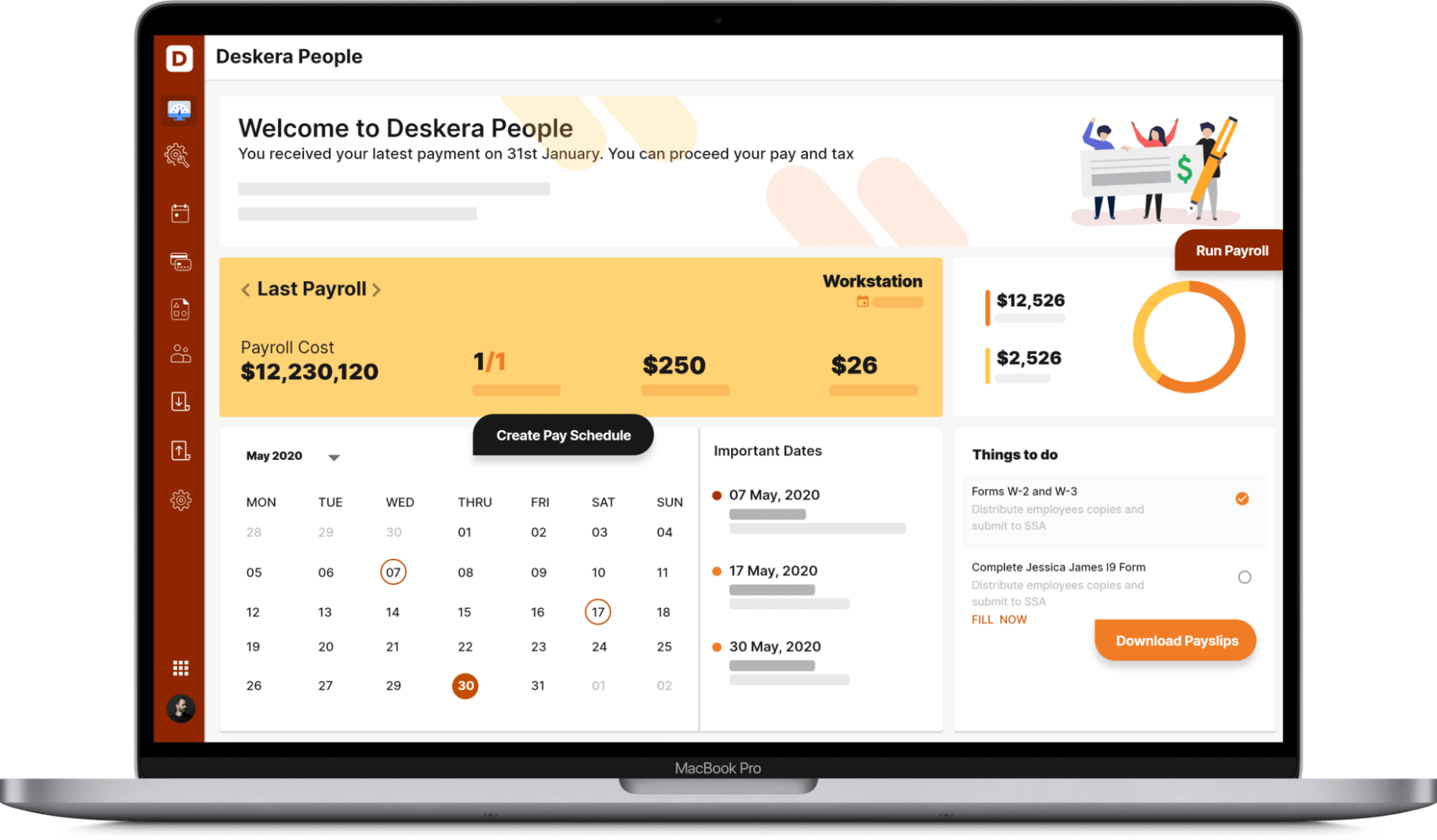
This in-built attendance system in Deskera People will let you and your employer track your number of working hours, which will then be used while processing your payroll automatically, without any hassles. In fact, with Deskera People, you would even have a custom calendar with the holidays assigned based on your geographical region as well as your company’s requirements.
Lastly, with Deskera People, you would be able to view your payslips, apply for time off, and file your claims and expenses online. The status of your requests will be visible on the dashboard, and you can even re-apply for leaves or follow up with your manager for rejected leaves.
Key Takeaways
An integral part of the Indian culture and traditions are the festivals that are celebrated in this country. While the festivals or their celebrations and traditions may vary from one state to another, what remains constant is the enthusiasm and togetherness in the celebration of the festivals. Festivals of India are loved by each of the citizens and are eagerly awaited by every one of them.
In India, there are two types of holidays: national holidays and regional holidays. National holidays are the ones that are applicable all across the country, whereas regional holidays are those that are applicable in one or few specific states.
Delhi, having the capital of India- New Delhi, is often the hub of the celebration of festivals, especially when it comes to national holidays like Independence Day, Republic Day, and Gandhi Jayanti. In addition to these national holidays and bank holidays, it also has several regional holidays that are as diverse and encompassing as the diversity of culture and traditions in India.
Some of the most popular regional holidays are Janmashtami, Dussehra, Diwali, Bakrid, Muharram, Christmas, Holi, Good Friday, Buddha Purnima, and Guru Nanak Jayanti. Covering the castes of Hindu, Muslims, Sikhs, Buddhists, Jainism, and Christians, many of these festivals are often celebrated by people outside of those castes. Festivals are the strength of the Indians and is what brings them all together amidst the otherwise busy and hectic days.
Related Articles
